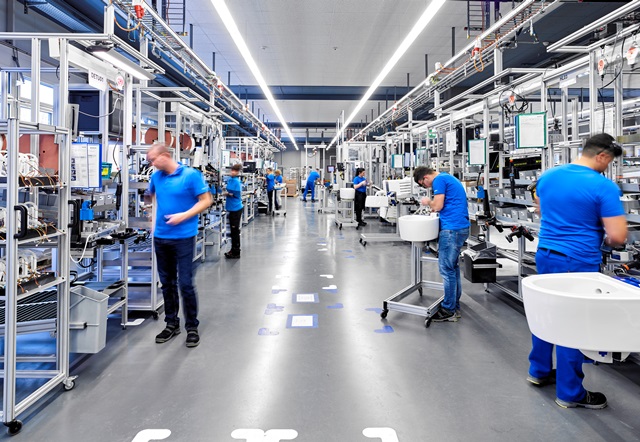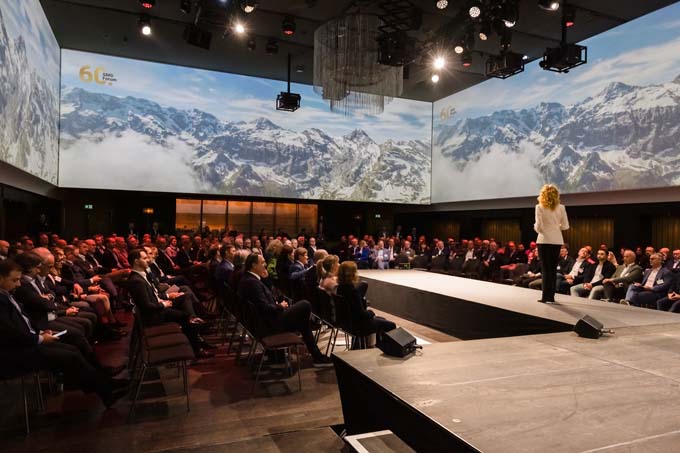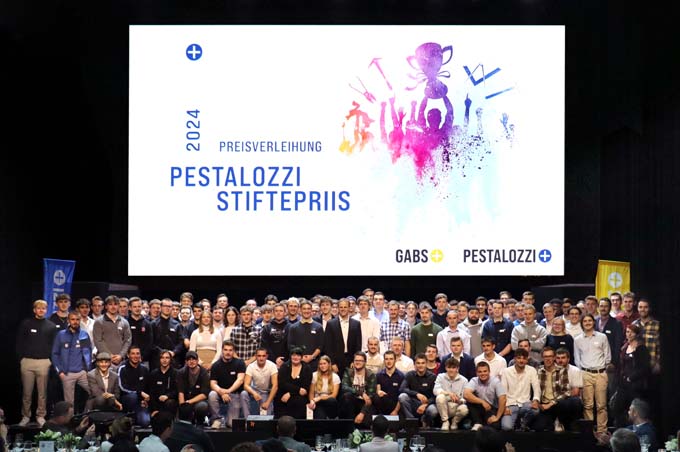Asia procurement: students advise companies
Students from the Department of Economics at Kalaidos University of Applied Sciences regularly work on specific tasks from the business world. In the example shown here, they supported Geberit Apparate AG and examined the TCO in Asian procurement.

Under the "Case Study" format, Kalaidos University of Applied Sciences offers an attractive form of business consulting by students. The spectrum of business issues dealt with is based on the professional, social and methodological competencies acquired in professional life and taught in the course of studies. Topics include in particular strategy, marketing, business development, human resources, knowledge management, accounting, change management, quality & risk management and process optimization. The application of pragmatic, goal-oriented problem-solving methods and a sound scientific approach are central. The results are presented in the form of concepts, decision bases, market studies, analyses as well as concrete implementation measures.
The initial situation
The Rapperswil-Jona-based Geberit Group is the European market leader for sanitary products and comprises a total of 35 production plants. One of the production plants is Geberit Apparate AG (GAAG), which specializes in the manufacture of Geberit AquaClean and similar electromechanical products. It commissioned three students from Kalaidos University of Applied Sciences to investigate the total cost of ownership (TCO) in Asian procurement and to develop measures for best practice. As a global industry leader, with a procurement share of around 70 % of the value added, purchasing in Asian markets is of great importance. But the demands on procurement are constantly growing and the right balance must be found in a dynamic field of tension. This work helps GAAG to identify potential in procurement on the Asian markets, presents measures and supports implementation.
The procedure
In order to create a good starting position, the project team first developed the theoretical foundations in the very heterogeneous subject areas of procurement, cost management, TCO, best practice as well as the Asian procurement market. A quantitative and a qualitative analysis were then carried out over a period of 14 weeks in order to collect the data relevant to Geberit Apparate AG.
The quantitative corporate analysis with a focus on total cost of ownership clarified the actual situation of "Asia procurement" within GAAG. It covered the purchasing volume, personnel expenses and expenses for freight and import of procurement in Asia for the years 2013 to 2016. A total of 607 suppliers and around 1440 components of GAAG are analyzed. In order to be able to represent a volume comparison of the procurement in the Asian market to the remaining procurement, the purchase quantity and the purchase volume are raised over all suppliers and compared on the levels supplier, country as well as total. In order to be able to represent additionally a comparison of the personnel, freight and import expenditures of the asiatic procurement to the remaining procurement, these are compared on the basis the total expenditures. The data collection of the purchasing quantities and the purchasing volume is carried out by means of an evaluation from the Geberit Business Warehouse.
The qualitative data analysis consisted of two different parts. The first analysis dealt with the internal stakeholders of the procurement process in Asia. The second analysis focused on the external view and was conducted with selected external experts. This division ensured that an external view was included in the assessment in addition to the internal view. A qualitative content analysis was used to assess the qualitative results.

The results
The results of the analysis showed that purchasing in Asia accounts for around a quarter of GAAG's total procurement volume. However, due to the overall cost situation, it is not worthwhile to purchase in Asia in every case. Procurement on another continent means much more effort in terms of transport, communication and administration. In addition, it has become apparent that costs have risen in recent years.
Based on the findings and a scenario analysis, a best-practice approach was developed with three priority levels and 26 measures divided into 12 categories. The spectrum of the identified fields of action ranges from dealing with the identified cost drivers and technical approaches to measures aimed at improving cooperation with suppliers, as well as possibilities that help to meet GAAG's high social and environmental standards. The accompanying schedule for the implementation of measures was drawn up to check the plausibility of the implementation quality and shows not only the prioritization in terms of time, but also the phases of the impact review that are central to the success of the project.
Benefits for Geberit Apparate AG
In addition to the comprehensive project report and the presentation of the concrete results on the total cost of ownership in Asia procurement, the main benefit for GAAG lies above all in the interactive processing of a strategically important question and the neutral external view of the project managers. As an additional benefit to the extensively described and prioritized improvement measures, many further ideas for the optimization of Asia procurement are identified, which GAAG can examine. Especially from the in-depth analysis of the interview statements, additional and very concrete information can be gained, e.g. on communication costs or on the costs of problem solving strategies. Karl Zahner, Managing Director of Geberit Apparate AG and client, puts it this way:
"The project team succeeded very well in grasping the complex task in terms of its essential content and in delineating it in a meaningful way. Based on an extensive analysis of the relevant data and information, interesting approaches to a concrete catalog of measures have been developed, which supports us in further optimizing our Asian procurements according to the TCO approach."
To the Case Study
"It is very demanding to clearly delineate topics without neglecting relevant aspects. It is also very important to regularly compare the procedure with the client's ideas and requirements. In this way, problems can be identified at an early stage. Despite the extraordinary time commitment, it was extremely exciting and valuable to gain insight into a company that rightly belongs to the world leaders."
Michael Wettstein, Head of Purchasing & Logistics, Torgen Switzerland GmbH
* The authors are graduates of the Bachelor in Business Communication FH, in Business Administration FH and in Business Law FH at Kalaidos University of Applied Sciences. Contact via Dr. Marcel Schmid, Head of Knowledge Transfer in the Prorectorate Teaching at Kalaidos University of Applied Sciences. marcel.schmid@kalaidos-fh.ch, www.kalaidos-fh.ch









